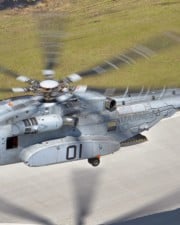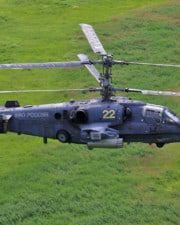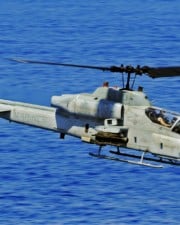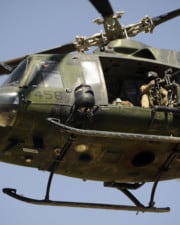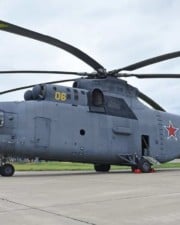Helicopters have proven themselves valuable in many ways. Since the very first helicopters were used in combat, the designs have been modified and tweaked. Now, many different types of helicopters serve all sorts of different missions. Today, let’s look at how the modern attack helicopter came to be.
Table of Contents
What was the First Attack Helicopter?
While many helicopters were used in combat and armed in various ways, the first purpose-built attack helicopter was the Bell AH-1 Cobra. It began operations for the US Army in 1967 and was immediately put into service during the Vietnam conflict. But the story of how it came to be and the designs that led up to it is one of the more interesting aircraft design stories of the last century.
What is an Attack Helicopter?
Before we can identify which helicopter was the first attack helicopter, it would help to have a firm idea of what constitutes an attack helicopter.
You see, helicopters are already very specialized flying machines. Much like the airplane, the first helicopters were designed to fulfill multiple roles. As it successfully filled those roles, later generations of choppers were designed with more specific uses and missions in mind.
So the first helicopters did it all—they carried external loads, evacuated the wounded, or operated as gunships with guns, missiles, and armaments. But this sort of gunship helicopter does not constitute an attack helicopter.
By definition, an attack helicopter is specifically designed as a fighter. To capitalize on their low and slow flight profiles, attack helicopters’ primary targets are infantry, military vehicles, and fortifications. Standard armaments found on these choppers include machine guns, rockets, and anti-tank missiles.
Modern attack helicopters fulfill two primary missions. They take out enemy tanks, vehicles, or ground-based facilities. Secondly, they provide close air support for troops on the ground. This occasionally includes protective escorting of transport helicopters.
Development and History of the Combat Helicopter
The idea of an attack helicopter can trace its history back to the early days of World War II when Russia and the US experimented with using slow-moving fixed-wing airplanes for stealthy nighttime attacks.
One famous example is the way the US used modified Piper J-3 Cubs. The famous training planes were modified in the L-4 Grasshopper for the Army. Three or four bazooka rocket launchers were mounted externally to the struts, and the planes successfully took out German tanks and artillery.

Igor Sikorski, a Russian immigrant, working in the US, began designing his initial helicopter designs during this same period.
The Sikorski R-4 was the first helicopter to go into production. The Army immediately saw the usefulness of the design and began modifying it for combat use. It was only used briefly during the war, and when it was, it was used for rescue and evacuation flights from combat zones. It flew in combat on April 25, 1944—but it was not an attack helicopter. https://www.history.com/topics/inventions/first-combat-helicopter-video
Post-War Helicopter Development
The success of the R-4 spurred a tremendous amount of development in technology after World War II. The utility that the helicopter offered was unmatched by any other technology. It needed no runways and could operate in the harshest terrain. It could fly low and slow in areas hazardous for fixed-wing aircraft to operate. And it could land anywhere to drop off or pick up troupes or the injured.
The 1950s became the heyday for helicopters. There is no film or story set during the Korean or Vietnam Wars that does not star the chopper heavily.
One of Sikorski’s most successful designs was the S-55. It was converted into the H-19 Chickasaw for the Army and Air Force and the H-34 for the Navy. It first flew in 1954. Unlike later attack and military choppers, the H-34 was powered by radial piston engines.
The USSR was likewise developing rotorcraft technology after the war. Their first successful transport helicopter was the Mil Mi-4, which had similar performance specifications to the Sikorski.

These early helicopters filled many roles as their utility became obvious. Armed Sikorski H-34s and Mil Mi-4s were put into service and served in combat operations. The Bell 47, with its distinctive bubble canopy, was a Korean-era utility helicopter that was tested to see if a large 90 mm caliber bazooka could be fired during flight.
As future generations of helicopters were developed, each successive model had options to be armed. For example, in the 1960s, the famous Bell UH-1 Huey and Mil Mi-8s widely used during the Vietnam conflict often carried arms.
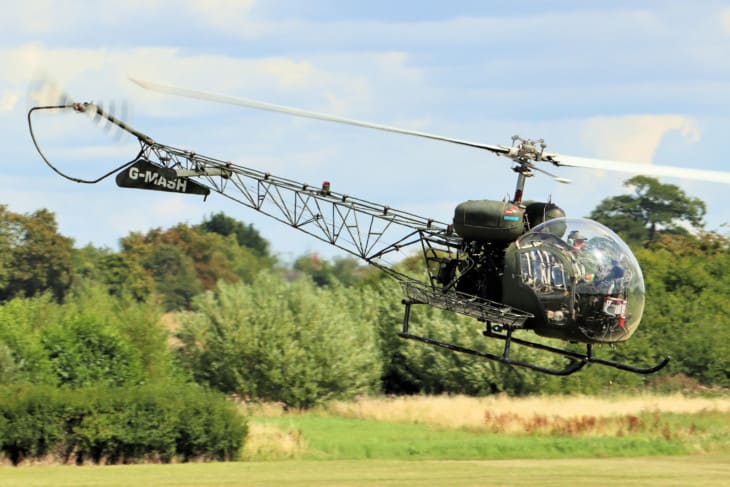
First Pure-Breed Attack Helicopters
During the mid-1960s and the height of the Vietnam conflict, the US Army decided it needed a purpose-built attack helicopter. The basic design requirements stated that it should be faster and more maneuverable than the transport helos of the time while being more heavily armored and carrying more firepower.
The requirements for the new aircraft were released in 1964 and became known as the Army’s Advanced Aerial Fire Support System, or AAFSS. Companies began submitting competing designs to see what the Army would support.
Several prototypes were submitted and followed up on. Lockheed proposed an innovative design known as the AH-56 Cheyenne. There were also prototypes evaluated from Sikorsky, Kaman, and Bell. So which one was the first? As with many stories of aircraft design and development, the devil is in the details.
Lockheed AH-56 Cheyenne Program
Built from the ground up to meet the Army’s specifications for their new breed of “attack helicopter,” the Cheyenne would be the clear winner as the first of the kind. But unfortunately, the Cheyenne featured a complex design that went over budget and was behind schedule.
The most interesting thing about the Cheyenne was that it was a compound design—it blended elements of both helicopters and fixed-wing planes. It had a rigid rotor system and small wings mounted on the fuselage.
The tail boom featured a conventional tail rotor to counteract the torque effect of the main rotor. But it also featured a pusher propeller, which provided thrust at high speeds.
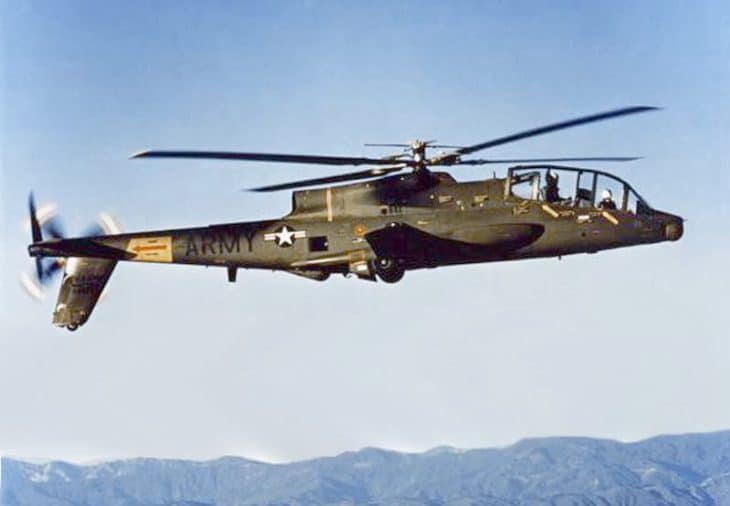
The wings began producing a majority of the lift at high speeds—as much as 80 percent. This setup reduced the load on the main rotors and allowed the design to operate at speeds much higher than regular helicopters can achieve.
Other elements of this early design were similar to what we see today in attack helicopters. For example, it had tandem seating to reduce its profile and fuselage drag.
Unfortunately, the pressing conflict in Vietnam meant that the Army needed a more readily available solution to their attack helicopter problem. The Bell AH-1 Cobra fit the bill.
The Cheyenne program was canceled in 1972 after they had produced only ten prototypes. It was made obsolete by the incredible success of the Cobra and new mission requirements set by the Army. With the cancellation of the Cheyenne, the Army retooled their requirements for the future. The new program was dubbed the Advanced Attack Helicopter (AAH). This program eventually led to the creation of the Hughes AH-64 Apache.
Bell AH-1 Cobra
Despite the advanced design concepts submitted by the manufacturers, the first successful attack helicopter wound up being rather conventional.
The Cobra first flew in 1965 and was operated in service in 1967. It was built from many common components of the widely-flown Bell UH-1 Iroquois, commonly called the “Huey.”

Commonality and simplicity in design wound up being the winning factors for the Cobra, or more properly, the “Huey Cobra.” Its rotor, transmission, engine, and many other components were field-swappable with the more common transport UH-1. The result was easier to produce, maintain, and fly for the armed forces already using the Huey.

Eventually, over 1,000 Cobras were produced. Variants included the Navy’s SeaCobra and SuperCobra. The AH-1 was the Army’s primary attack helicopter for several decades, and the choppers saw combat in Vietnam, Grenada, Panama, and Iraq. The Cobra was also popular with the US Marine Corps.
In the 1990s, the Cobra began being phased out and replaced by the more modern and more capable Boeing AH-64 Apache. The Cobra is still in use in several services worldwide, including the Israeli and Turkish Air Forces.
Related Posts


